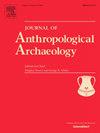17世纪新英格兰南部白尾鹿的商品化
IF 2.2
1区 社会学
Q1 ANTHROPOLOGY
引用次数: 0
摘要
可持续的自然资源利用和管理被广泛认为是解决当前地球生态危机的办法。然而,可持续发展有多种途径:消耗更少的资源或改变环境以提高生产力。17世纪新英格兰的白尾鹿(Odocoileus virginianus)提供了一个关于可持续和不可持续自然资源利用的历史生态学的翔实案例研究,因为该物种表面上被土著人民可持续地使用了数千年,但在欧洲殖民后不久就被捕杀几乎灭绝。对康涅狄格河谷下游两个地点的白尾鹿遗骸进行的动物考古分析表明,17世纪,由于新的商业资本主义经济中该物种的商品化,狩猎压力增加,该地区的鹿数量下降。这种鹿的数量在17世纪出现了下降——在人类总体数量下降的时候——这似乎是由资本主义市场力量造成的,资本主义市场力量增加了对鹿皮服装的需求,以达到社会信号的目的。这些结果说明了在促进可持续的自然资源利用和管理时解决商品化危害的重要性。本文章由计算机程序翻译,如有差异,请以英文原文为准。
Commodification of white-tailed deer (Odocoileus virginianus) in 17th century southern New England
Sustainable natural resource use and management is widely proposed as the solution to our current planetary ecological crises. However, there are multiple pathways to sustainability: consume fewer resources or modify the environment to be more productive. White-tailed deer (Odocoileus virginianus) in 17th century New England provide an informative case study of the historical ecology of sustainable and unsustainable natural resource use as the species was ostensibly used sustainably by Native peoples for millennia but hunted nearly to extinction soon after European colonization. Zooarchaeological analyses of white-tailed deer remains from two sites in the lower Connecticut River Valley suggest that deer abundance in this locality declined in the 17th century due to increased hunting pressure consistent with commodification of the species within a novel mercantile capitalist economy. Depression of this deer population in the 17th century—at a time of general human population decline—appears to have been driven by capitalist market forces that increased demand for deerskin clothing for purposes of social signaling. These results illustrate the importance of addressing the harms of commodification when promoting sustainable natural resource use and management.
求助全文
通过发布文献求助,成功后即可免费获取论文全文。
去求助
来源期刊

Journal of Anthropological Archaeology
Multiple-
CiteScore
4.00
自引率
11.10%
发文量
64
期刊介绍:
An innovative, international publication, the Journal of Anthropological Archaeology is devoted to the development of theory and, in a broad sense, methodology for the systematic and rigorous understanding of the organization, operation, and evolution of human societies. The discipline served by the journal is characterized by its goals and approach, not by geographical or temporal bounds. The data utilized or treated range from the earliest archaeological evidence for the emergence of human culture to historically documented societies and the contemporary observations of the ethnographer, ethnoarchaeologist, sociologist, or geographer. These subjects appear in the journal as examples of cultural organization, operation, and evolution, not as specific historical phenomena.
 求助内容:
求助内容: 应助结果提醒方式:
应助结果提醒方式:


